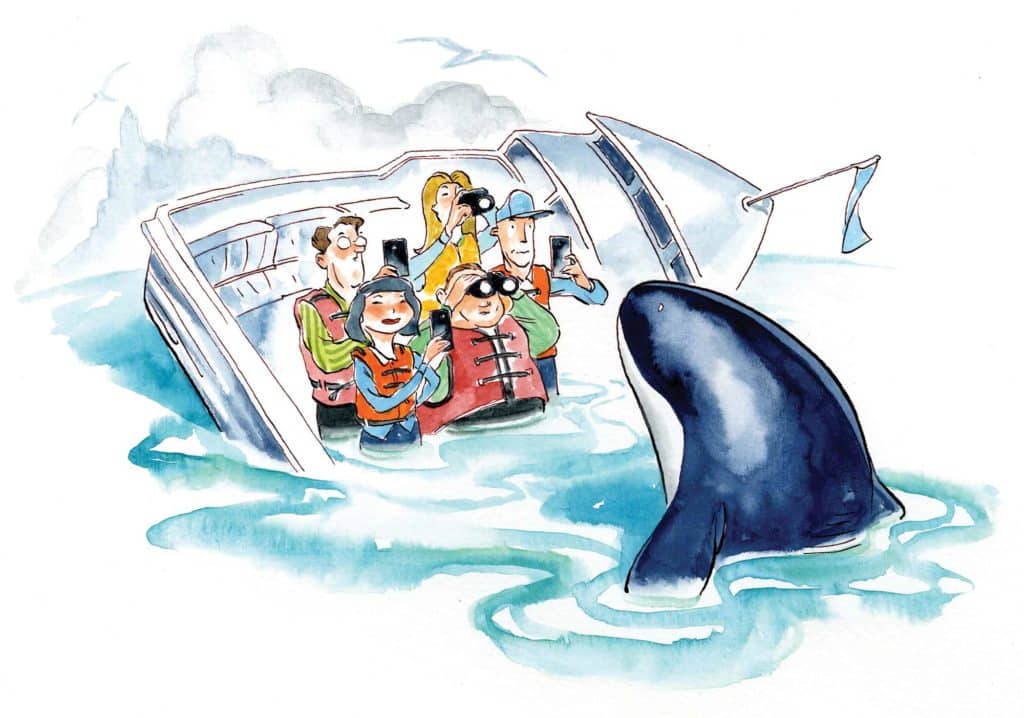
It should be obvious, I suppose, that a boat running level across its beam will ride better. When leaning to one side — listing — a boat is contacting the water on one of the two basically flat hull panels instead of a sharper V shape.
As a result, a listing boat will generally ride harder, and wetter too, because spray will tend to get thrown vertically rather than out to each side.
Listing also induces a turn to the side in which the boat is leaning. This, then, requires more attention to the helm and more physical effort, especially if the boat is equipped with cable steering or is powered by a tiller-model outboard.
A wrinkle involves boats with flat bottoms, which have no water-slicing V shape to speak of. Way back in the heyday of the Jersey watermen, it was discovered that a listing Garvey (the penultimate flat-bottomed boat type) presented its chine corner to the water in a way that tended to smooth the ride. There’d still be the steering issue to deal with, but like boats themselves, techniques of seamanship often prove a compromise of one sort or another.
I’ve seen baymen in my local Long Island waters load a skiff with bivalves so that the gunwales were damn near at the surface of the water. This was on calm days with little boat traffic, and by experienced professionals toiling for their daily bread. Still, listing, even a little, would not have been good. Dipping a rail might have proved tragic.
We recreational boaters have to deal with what might be called a “live load” and therefore need to be at least as careful. A small boat — and I term most boats under about 35 feet as small — with a capacity load of crew aboard presents the opportunity for the skipper to exercise judgment, experience and authority. If everyone aboard rushes to one side to see the whale, the shoreside mansion or the cool boat about to pass, bad things can happen.
First of all, the boat’s going to want to steer to one side — and there’s a boat, a whale or the shore nearby that must be avoided. Second, the listing boat is going to present your crew with a slanted surface on which to stand. Third, the gunwale on the side of the boat to which everyone rushes will get lower to the water. Add in an errant wave or wake of just the right size and at just the right moment, and all three of the boat’s reactions to the movement of live ballast can be affected dramatically, resulting in catastrophe. A tragedy of just this sort occurred aboard a small tour boat in upstate New York some years ago.
I can’t tell you how to speak to your crew. They are your family and friends. And no one can imagine the infinite combinations of wind, weather and situations. What I can say is that good seamanship dictates the need to load our boats with care and see that the load remains secure. That holds true whether the load is a cooler full of ice, bushels of clams, or the people we care about most.









